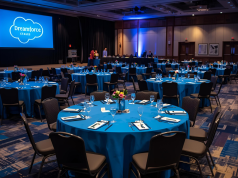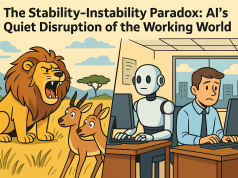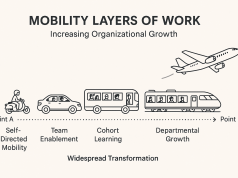In the lexicon of corporate success, the term ‘mentorship’ resonates with profound significance. Yet, as the fabric of the modern workplace continues to undergo a relentless metamorphosis, the traditional scaffolding that underpinned the leadership ladder shows signs of wear. This seismic shift begs the question: is the traditional mentor-mentee paradigm a relic of yesteryear, unfit for the mosaic of today’s dynamic and diverse work environments?
Traditional mentorship typically evokes the image of a seasoned executive imparting wisdom to a younger, ambitious professional. This time-honored structure is predicated on a hierarchical transmission of knowledge, with the mentor firmly positioned on a higher rung of the proverbial ladder. However, as industries evolve and workplace demographics change, the underpinnings of this ladder seem increasingly anachronistic. No longer is the workforce a monolith; it is a kaleidoscope of generational cohorts, cultural backgrounds, and intricate career pathways.
The convulsions that have rocked the world of work in recent years — from the gig economy’s surge to the existential jolt of the pandemic — necessitate a reevaluation of conventional wisdom. Today’s workplaces are gravitating towards more egalitarian and fluid structures, wherein the value of peer-driven, collaborative learning is gaining currency. The evolution of leadership models has sparked a movement away from vertical mentorship to a more horizontal, multilateral form of coaching and guidance.
The shortcomings of traditional mentorship are being challenged by innovative approaches that democratize leadership development. Companies are increasingly implementing mentoring circles, reverse mentoring, and project-based mentoring programs that reflect a flattening of hierarchies and a breaking down of the silos that once defined corporate growth. These forms of mentorship harness the collective intelligence of the group and empower individuals to learn not only from one ‘master’ but from the diverse experiences of their peers.
In dissecting the efficacy of these contemporary strategies, one finds a common thread: the blurring of lines between teacher and student, leader and follower. This democratization of learning helps to dismantle the rigid succession of the leadership ladder, enabling employees to contribute to and assume leadership roles in unconventional and non-linear ways. The outcomes of such initiatives can be revelatory, often spurring innovation, enhancing job satisfaction, and fostering a culture of shared ownership over one’s professional development.
In the spirit of this shift, case studies abound with organizations that have reaped the benefits of restructuring their mentorship schemes. Tech giants, for example, have been pioneers in adopting mentorship models that resonate with their culture of rapid innovation and flat organizational structures. These companies have demonstrated that when employees at all levels are engaged in mutual mentorship, the results can lead to faster problem-solving, cross-functional collaboration, and the breaking down of knowledge silos.
Evidence of success extends beyond the tech sector. Interviews with leaders in various industries reveal a confluence of positive outcomes stemming from these non-traditional mentorship initiatives. From multinational corporations to nimble startups, the stories are compelling, showcasing a shift towards a mentorship culture that excels in fostering a sense of community, nurturing talent, and promoting diversity.
The implications for leaders, especially those with readership sensibilities aligned with the Washington Post, The New Yorker, and The New York Times, are clear. To cultivate a mentorship culture that is inclusive, effective, and resonant with contemporary values, it is incumbent upon them to innovate. Companies must reimagine their mentorship programs to align with an ethos of mutual learning, challenge the status quo of professional advancement, and embrace new paradigms that empower all employees to ascend the leadership ranks without the confines of conventional career ladders.
In conclusion, the leadership ladder may not be unequivocally broken, but it is undeniably in need of renovation. The modern workplace demands a mentorship model that mirrors its complexities and nuances — one that replaces the rigid hierarchy with a more adaptable, inclusive, and empowering framework. By doing so, leaders can ensure that their organizations not only keep pace with the times but set the course for a future where every employee is both a mentor and a mentee, and the ladder they climb, however unconventional, leads to a zenith of collective achievement and personal fulfillment.




























